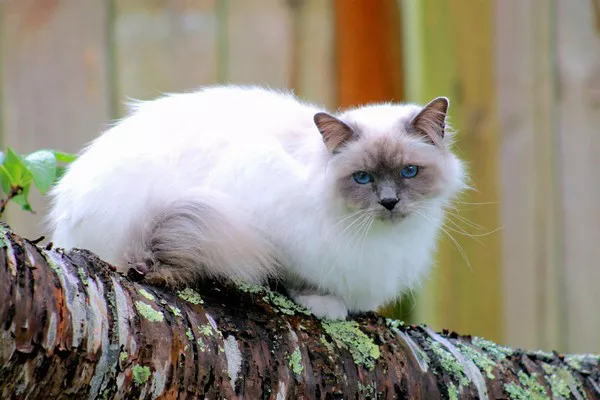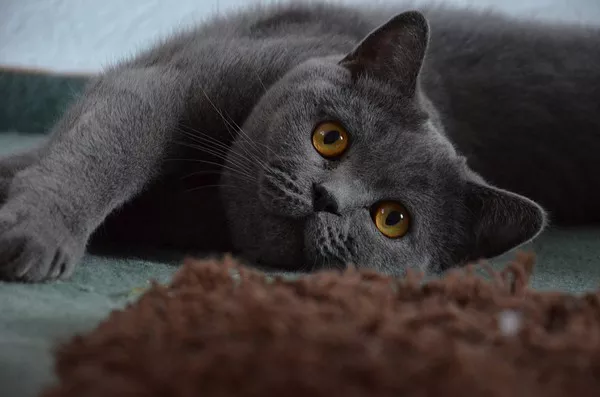Cats are fascinating creatures known for their keen senses and mysterious behaviors. One aspect that sets them apart is their vision, which differs from that of humans in various ways. Among these differences is color perception, with cats experiencing a form of color blindness. In this article, we’ll delve into the intriguing world of color blindness in cats, exploring the science behind it, the reasons behind their unique vision, the impact on their behavior, and how understanding this phenomenon can enhance our bond with our feline friends.
The Science of Cat Vision
1. Dichromatic Vision: Cats possess dichromatic vision, which means they have two types of color receptors, or cones, in their eyes. This contrasts with humans who have three types of cones, enabling them to perceive a wide spectrum of colors.
2. Limited Color Perception: Due to their dichromatic vision, cats have a more limited perception of colors. They primarily see colors on the blue and green spectrum, while reds and pinks appear as shades of gray or muted colors.
Understanding the Evolutionary Perspective
1. Adaptation to Nocturnal Life: Cats’ color vision is adapted to their natural nocturnal lifestyle. Their ability to distinguish between different shades of blue and green helps them navigate in low-light conditions, such as during dawn and dusk.
2. Focus on Movement: Cats are skilled hunters, and their vision is optimized to detect movement rather than colors. Their visual acuity allows them to spot even slight movements of prey, which is crucial for survival.
How Cats Perceive Colors
1. Blue and Green Perception: Cats can perceive colors in the blue and green range more accurately than others. These colors appear vivid to them and play a role in their visual experiences.
2. Red and Pink Appear Gray: Colors such as red and pink appear as shades of gray to cats due to the lack of specific cones in their eyes that are sensitive to these hues.
Impact on Behavior
1. Toy Preferences: Understanding cats’ limited color perception helps explain their toy preferences. Cats may be more attracted to toys with contrasting patterns and textures rather than vibrant colors.
2. Hunting Strategies: Cats’ color vision influences their hunting strategies. They rely on motion detection and their keen sense of smell to locate prey, rather than distinguishing between different colored environments.
Enhancing Our Bond with Cats
1. Tailoring Enrichment Activities: Knowing that cats have limited color perception can guide us in tailoring enrichment activities for them. Providing toys and activities that stimulate their senses of smell, touch, and motion can be more engaging for our feline companions.
2. Creating Visual Contrasts: Cats may be more drawn to toys and objects with high contrasts. Incorporating patterns and textures that stand out to their vision can pique their curiosity and engagement.
The Myth of Monochrome Vision
1. The Urban Legend: Contrary to a common belief, cats are not entirely color blind or monochromatic. While their color perception differs from humans, they can still differentiate between certain colors within their limited spectrum.
2. Blue-Yellow World: Cats see the world as a mix of blue and yellow hues, which may impact how they perceive their surroundings and interact with other animals and humans.
Veterinary Considerations
1. Impact on Healthcare: Veterinarians take cats’ color vision into account when designing healthcare environments. Calming color schemes and contrast-rich layouts can help minimize stress during veterinary visits.
2. Medication Administration: Knowing that cats struggle to distinguish reds from other colors can influence the design of medication packaging, ensuring that important dosage information is communicated effectively.
Conclusion
In conclusion, color blindness in cats adds another layer of intrigue to their already enigmatic nature. Their dichromatic vision, adapted to their nocturnal lifestyle and hunting prowess, influences their perception of the world around them. Understanding their unique color perception can help us create more enriching environments for our feline companions, enhance our interactions, and cater to their visual needs. While cats may not experience the full spectrum of colors that humans do, their distinctive vision is a testament to the remarkable ways in which evolution has shaped their senses. By embracing their unique perception, we can deepen our connection with these captivating creatures and provide them with the best possible quality of life.






















